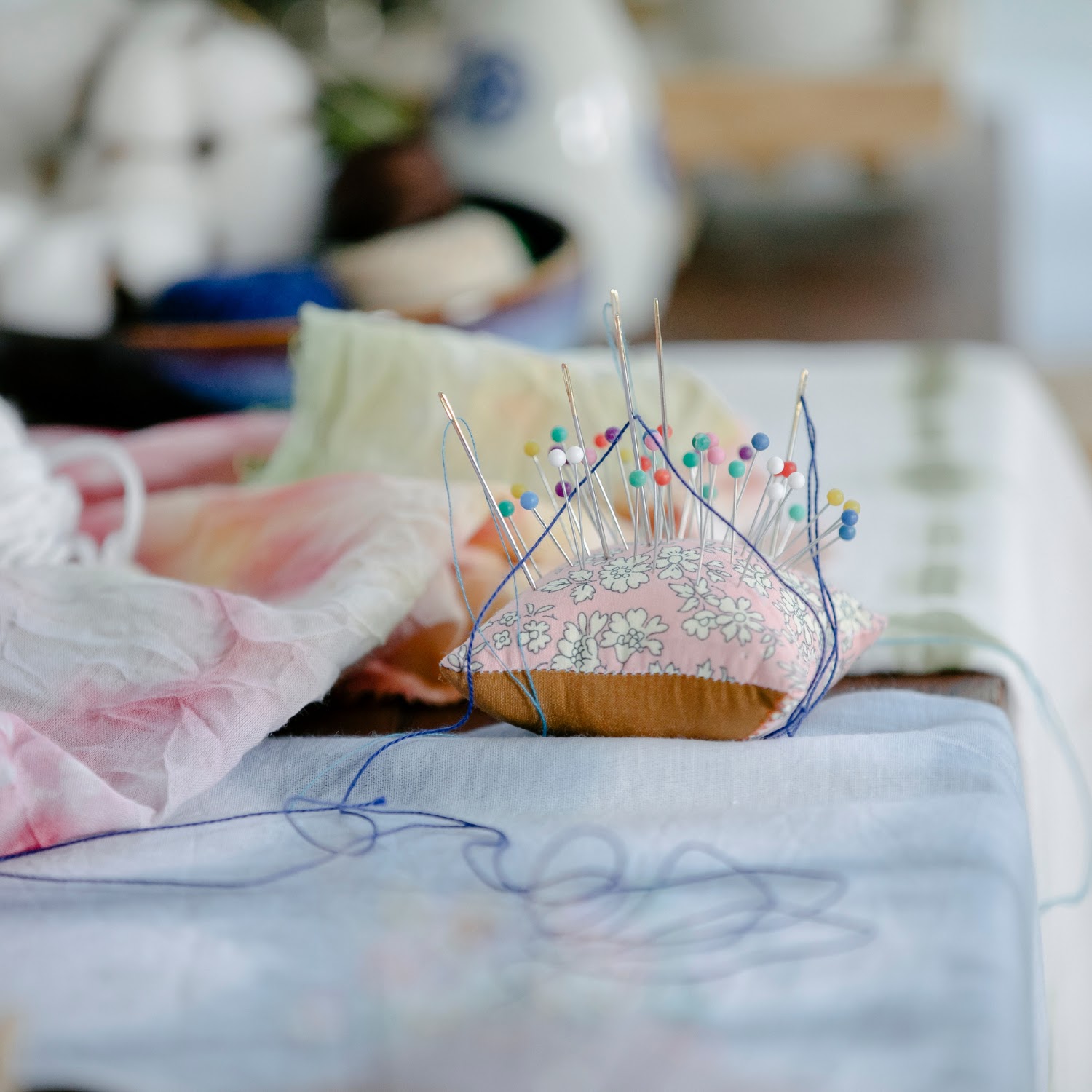
Wedding season continues on even through the winter months! I created this tutorial to show you how to add
a waistband to a formal gown or dress.
The reason I added a skinny waistband to this gown is
because there was an unfortunate mishap I experienced. The satin tore in the back at the seam between
the skirt and the bodice. It was about a
3” tear. When I placed the gown on my dress
form to finish hemming the lining, I
turned the form around to the back and lo and behold a tear appeared out of
nowhere. I suspect there was a weakness
in that area where the satin and stitching were, but I wasn't certain. It happened on my clock and I had to do something to make a repair. The lining underneath the tear was completely
together still. I panicked a bit but calmed
down after thinking through a solution.
I could take it apart in that area and reinforce the back of the satin
with a little interfacing, but I thought the area is so small that I would have
to take more apart and create twice as much work. I was also limited on time because of all the alterations the gown needed - hem, take in sides with side zipper, fix cowl neck. I had to be done in less than a week and had to consider my day job with little time to spare.
Since I had to hem the gown, I had a lot of excess satin. I
thought I could make a waist band not only to reinforce the tear, but to easily
cover the damage. I had to explain what happened
to my client and get her approval on my repair and she was completely fine with
it. Needless to say, I was very relieved
and quickly got to work!
Here is the front completed after adding the band.
Here's the back after adding the waist band. This is where the tear was.
Here it is - the unthinkable. Believe me, I know I'm not the only seamstress who experiences accidents, but I am responsible to resolve and find a solution.
I stitched down the tear to the lining the best I
could. I made sure to stitch past the
unraveled edge so the fabric can stay put.
At this point, I wasn’t concerned how it would look, because my goal was
to cover the damage with a new waistband.
Here’s the extra fabric after I hemmed the gown. I knew there was plenty to spare for a waist band.
I straightened it out and it had a slight give which was good. I made sure to measure and I did have enough.
After I cut the piece I needed, I pressed out the wrinkles on a low setting, no steam.
Now it's nice and flat to work with.
I measured 1/2" from the raw edge and marked with chalk. Sorry my red marker wasn't in the right spot. I used the cleaner portion with no wrinkles. I did this because I will use this as the top of the waist band which will be more visible.
This dress has a side zip. Since I altered the sides and had the zipper disassembled, this was a good time to install the waist band. You could add this waistband the same method even if you were not altering the sides. I'll show you at the end of this tutorial what to do with the ends of the band.
The dress is shown here with the bodice on the right and the skirt on the left. This is the front of the dress. I started by pinning the band on the bodice side. I started where the zipper at the side would be. I pinned past the seam between the bodice and skirt slightly.
I'm now at the back of the dress. I lifted the band to show you where the tear is. This band will provide the coverage needed.
I stitched the band down following my marks.
Now that the top is stitched, the next step was to fold the band over just enough past the seam. I folded and pinned it down.
The last step was to slip stitch the band down. I could have sewed by machine, but I didn't want any stitches showing. I wanted all stitches to be hidden.
Here is the band stitched down at one of the ends where the zipper will be reinstalled. I stated earlier, you can sew this band on even if you were not doing alterations. The ends of the band will either meet at the sides or back, normally where a zipper would be. You can fold the band ends under and neatly tuck everything in and finish sewing close to the edge, but not too close to the zipper teeth so your zipper doesn't get jammed by fabric. I believe doing this by hand would be best to hide any stitches.
I hope you found this helpful in any way to solve issues or just simply add some interest to the waist of your gown!
Thanks for stopping by and I'll see you next time!
Happy Sewing!....Diana























Post a Comment